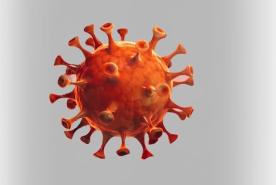Last Updated: July 14, 2023
Medically reviewed by NKF Patient Education Team
Risk factors for chronic kidney disease (CKD)
Anyone can develop chronic kidney disease (CKD) – at any age. However, some people are more likely than others to develop CKD. The most common CKD risk factors are:
- Diabetes
- High blood pressure (hypertension)
- Heart disease and/or heart failure
- Obesity (having a body mass index or BMI of 30 or more)
- Over the age of 60
- Family history of CKD or kidney failure
- Personal history of acute kidney injury (AKI)
- Smoking and/or use of tobacco products
Usually, developing CKD is not due to any single reason, but because of a combination of physical, environmental, and social factors. Early detection is important – CKD often begins without causing any obvious symptoms. If found and treated early, you can help slow or even stop CKD from getting worse.
Kidney checkup: two simple tests
CKD is evaluated using two simple tests – a blood test known as the estimated glomerular filtration rate (eGFR) and a urine test known as the urine albumin-creatinine ratio (uACR). Both tests are needed to have a clear picture of your kidney health.

Urine albumin-creatinine ratio (uACR)
This test checks your urine for two different substances:
- Albumin - an important protein normally found in the blood. It serves many roles in the body - building muscle, repairing tissue, and fighting infection. It is not usually found in the urine.
- Creatinine - a waste product that comes from the digestion of protein in your food and the normal breakdown of muscle tissue. It is removed from the body through the kidneys and is expected to be found in the urine.
Healthy kidneys stop most of your albumin from getting through their filters and entering the urine. There should be very little or no albumin in your urine. If your kidneys are damaged, albumin can “leak” through their filters and into your urine.
Having albumin in your urine (also known as albuminuria or proteinuria) can be a sign of kidney disease, even if your estimated glomerular filtration rate (eGFR) is above 60 or “normal”.
This test often needs to be repeated to confirm the results. Decisions are rarely made based on the results from one sample.
A lower number is better for the uACR, ideally lower than 30.
Visit the urine albumin-creatinine ratio (uACR) page to learn more about this test.
Estimated glomerular filtration rate (eGFR)
This test is a measure of how well your kidneys are filtering the blood. To find the eGFR, your healthcare provider tests your blood for levels of creatinine. Creatinine is a waste product that comes from the digestion of protein in your food and the normal breakdown of muscle tissue. It is removed from the body through the kidneys. In CKD, the kidneys have trouble removing creatinine from the blood. This causes the eGFR number to go down.
An eGFR value below 60 can be a sign of kidney disease, even if your uACR is below 30 or “normal”.
This test often needs to be repeated to confirm the results. Decisions are rarely made based on the results from one sample.
A higher number is better for this test, ideally higher than 60.
Visit the estimated glomerular filtration rate (eGFR) page to learn more about this test.










